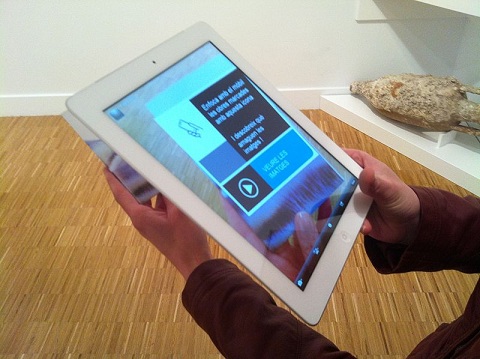Juniper Research report paints a promising 2013 for augmented reality applications
A new report from Juniper Research paints a promising future for augmented reality applications. Augmented reality is growing in popularity as an interactive technology and has been taking the mobile world by storm. The technology has won favor amongst consumers and marketers because of its dynamic capabilities. It has also begun making its way into the mobile commerce industry, though its uses therein have been sparse and limited in scope thus far. Over the next year, augmented reality applications are expected to see massive growth.
paints a promising future for augmented reality applications. Augmented reality is growing in popularity as an interactive technology and has been taking the mobile world by storm. The technology has won favor amongst consumers and marketers because of its dynamic capabilities. It has also begun making its way into the mobile commerce industry, though its uses therein have been sparse and limited in scope thus far. Over the next year, augmented reality applications are expected to see massive growth.
Augmented reality applications to generate more than $300 million in global revenue
According to the report from Juniper Research, augmented reality applications will generate more than $300 million in global revenue by the end of 2013. Traditional pay-per-download applications will be a major contributor to this growth, but retailers are beginning to become more interested in augmented reality and offering services using the technology to consumers for free. The report notes that retailers have been spending more on in-app advertising in 2012, a trend that is expected to pick up momentum throughout 2013.
Retailers growing more serious about augmented reality
In-app advertisements have long been an effective marketing tactic to engage consumers that make use of mobile applications. By adding augmented reality into the mix, these advertisements are made much more engaging, allowing markers to provide consumers with more dynamic digital content. Retailers have taken note of the potential that the technology has in this regard and are beginning to experiment with offering augmented reality content to consumers The report suggests that many retailers consider augmented reality as the key to getting in touch with a new generation of consumer.
Low awareness may hurt engagement potential
Juniper Research does caution against the low awareness many consumers have regarding augmented reality. Though the technology is growing in popularity, much of the attention it receives comes primarily from tech-savvy consumers that are already comfortable with the kind of interactivity it offers. Those that are not familiar with augmented reality are not likely to be enthralled by the technology, so retailers and other companies interested in the use of the technology may have to consider ways to raise awareness.

 ng developer of semiconductors and micro-technologies, has announced that its Digital Contactless Bridge interface is quickly becoming the de facto standard in regards to NFC technology. The high performance communication interface has been seeing wide adoption from various companies interested in making use of NFC technology in some way. Because the technology is capable of making NFC interactions more fluid and convenient, it may be well on its way to becoming a staple in industries like mobile commerce and marketing.
ng developer of semiconductors and micro-technologies, has announced that its Digital Contactless Bridge interface is quickly becoming the de facto standard in regards to NFC technology. The high performance communication interface has been seeing wide adoption from various companies interested in making use of NFC technology in some way. Because the technology is capable of making NFC interactions more fluid and convenient, it may be well on its way to becoming a staple in industries like mobile commerce and marketing.